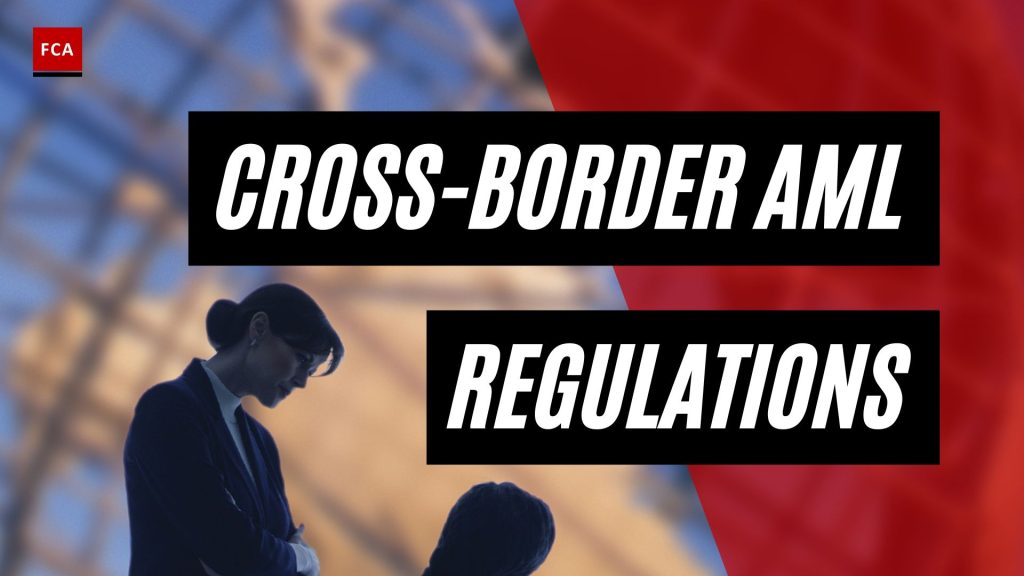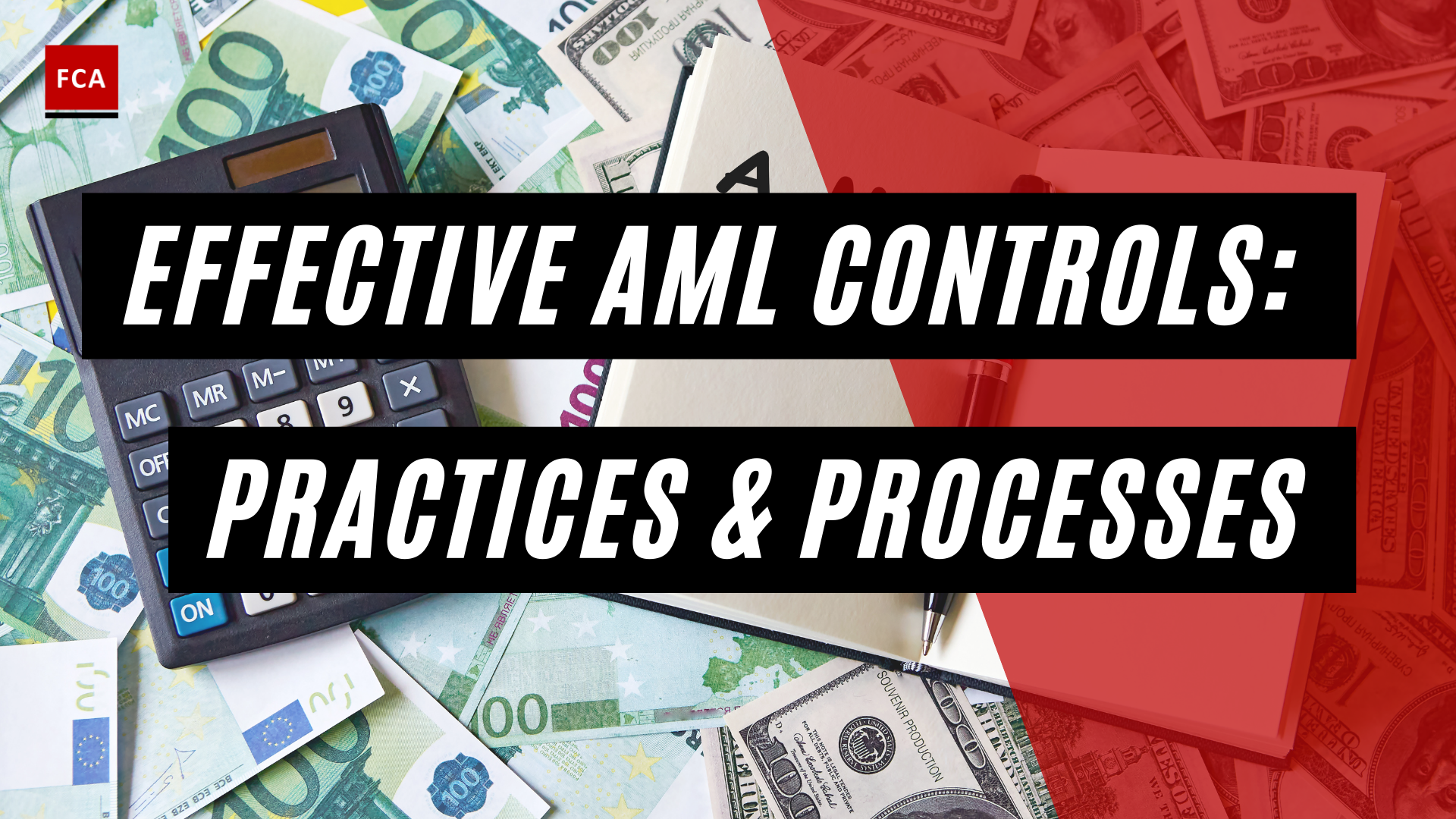Understanding Cross-Border AML Regulations
In the global financial landscape, adhering to Anti-Money Laundering (AML) regulations is a critical component of maintaining economic stability. Within this context, cross-border transactions present unique challenges and considerations.
Definition and Purpose of AML Regulations
AML regulations are legal guidelines put in place to prevent and detect money laundering and other fraudulent activities that can destabilize economies LexisNexis. These regulations are designed to discourage criminal activities such as terrorism financing, money laundering, and other financial frauds.
In the case of cross-border transactions, AML regulations serve to create a robust framework for monitoring and reporting suspicious activities. They deter illicit financial activities and ensure transparency in international financial transactions.
For organizations involved in cross-border transactions, complying with these regulations is not only a legal obligation, but also a crucial component of maintaining their reputational integrity and operational efficiency. For a deeper insight into the specific requirements and implications of these regulations, refer to our article on cross-border aml regulations.
The Role of FATF in AML
The Financial Action Task Force (FATF) is an international body that sets global standards for AML measures, known as the FATF Recommendations LexisNexis. One of its key roles is to provide a framework for countries to develop their own AML regulations in line with international standards.
In October 2019, the FATF introduced new recommendations to enhance the regulation of virtual assets and virtual asset service providers, which are particularly relevant to cross-border AML regulations Tookitaki.
A key part of these recommendations, known as Recommendation 16, outlines obligations for financial institutions – including banks – to collect and report information on cross-border wire transfers. This includes focusing on transaction information and the required diligence on customers involved in the transaction Tookitaki.
As the regulatory landscape continues to evolve, financial institutions must stay updated on the latest FATF recommendations and adapt their AML compliance processes accordingly. For more information on the role of the FATF and its implications for your organization, visit our guide on global aml compliance standards.
Impact of Non-Compliance with AML Regulations
Non-compliance with Anti-Money Laundering (AML) regulations, including cross-border AML regulations, can have serious repercussions. In this section, we’ll discuss the potential consequences of non-compliance and refer to a few case studies.
Consequences of Non-Compliance
Non-compliance with AML regulations can result in significant penalties, including hefty fines, reputational damage, loss of business, and even criminal charges. In 2022, global fines for failing to prevent money laundering and other financial crimes surged more than 50 percent, with many firms in the UK and the US committing repeat infractions. Sectors like Trading and Brokerage incurred fines totaling over $6 billion+, while Banking faced fines exceeding $2 billion+ globally.
| Sector | Total Fines (in $) |
|---|---|
| Trading and Brokerage | 6,000,000,000+ |
| Banking | 2,000,000,000+ |
In addition to regulatory fines, non-compliance can also lead to increased scrutiny from regulators, leading to potentially costly compliance reviews and audits. Firms may also face legal actions and civil lawsuits, particularly if their non-compliance has resulted in financial losses for customers or other stakeholders.
Case Studies of AML Non-Compliance
Several instances of non-compliance with AML regulations have been reported, underscoring the importance of robust AML compliance programs, especially when dealing with cross-border transactions.
-
In 2022, the Financial Conduct Authority (FCA) fined several investment firms, with one firm receiving a fine of over £2 million for failing to implement adequate procedures to mitigate the risk of being used to facilitate fraudulent trading. The FCA also discovered a circular pattern of trades aimed at withholding tax reclaims in multiple European countries.
-
A European bank was fined in 2022 for insufficient transaction monitoring of high-risk customers and inadequate enhanced due diligence (EDD) measures, totaling over $2 billion+ in civil monetary penalties. The bank also made fraudulent representations to other international banks regarding the effectiveness of their AML systems.
-
In the gambling industry, the Australian Transaction Reports and Analysis Centre (AUSTRAC) imposed a large fine on an entertainment group in 2022 for permitting customers to move money through non-transparent channels involving high money laundering risks. The UK Gambling Commission also issued its largest fine to date in 2022 due to money laundering and social responsibility failings.
-
The New York State Department of Financial Services (NYDFS) announced a $30 million financial penalty for significant crypto-related AML, cybersecurity, and consumer protection violations in 2022. The NYDFS identified critical failures in the firm’s cybersecurity program, including incomplete addressing of operational risks and non-compliance with certain provisions of the Department’s Cybersecurity and Virtual Currency Regulations.
These cases highlight the importance of adhering to AML regulations, including cross-border AML regulations, to avoid costly penalties and potential reputational damage. Effective cross-border AML risk assessment and due diligence are essential components of a comprehensive AML compliance program.
Navigating Cross-Border AML Challenges
The complexity of cross-border transactions and the different anti-money laundering (AML) regulations across jurisdictions present unique challenges in the fight against money laundering. This section discusses these challenges and the role of international cooperation in managing them.
Unique Challenges in Cross-Border Transactions
Cross-border transactions pose unique challenges for AML, with criminals exploiting the intricacies of global transactions and differences in AML regulations across jurisdictions to launder money. Cross-border banks tend to have lower AML/Counter-Terrorist Financing (CFT) compliance. This is attributed to the complexity of the legal environment, which is compounded by different requirements across borders, leading to potential gaps that can be exploited for money laundering and terrorist financing (IMF).
For professionals working in compliance and risk management, understanding these challenges and working towards effective solutions is crucial to prevent financial crimes. This often involves a comprehensive cross-border AML risk assessment and stringent cross-border AML monitoring processes.
Role of International Cooperation in AML
To combat the challenges posed by cross-border transactions, international cooperation and alignment among regulatory bodies are crucial. This understanding has led to increased efforts towards international AML compliance and cross-border AML enforcement.
International cooperation and information sharing are essential to tackle the challenges posed by cross-border banking in fighting money laundering and terrorism financing. Jurisdictions around the world are encouraged to cooperate and share information to address the challenges posed by cross-border money laundering and terrorist financing activities. Collaboration among countries is essential to effectively combat financial crimes that transcend national borders.
It is through such a concerted effort that the world can effectively navigate and manage the challenges of cross-border AML regulations. By bridging the gaps in regulations across jurisdictions and promoting a unified approach, international cooperation plays an instrumental role in AML compliance.
Role of RegTech in AML Compliance
With the ever-evolving nature of money laundering threats and the complexity of adhering to cross-border AML regulations, technology has emerged as a crucial ally. Regulatory Technology (RegTech) solutions have become critical in aiding financial institutions to navigate this complex landscape more efficiently and effectively.
Benefits of RegTech in AML
RegTech solutions aid in automating processes, enhancing detection capabilities, and improving regulatory reporting, making them invaluable in the realm of cross-border anti-money laundering Tookitaki. They can streamline and improve the efficiency of AML workflows, enabling more accurate identification and analysis of potential money laundering activities. This has the dual benefit of enhancing compliance standards and reducing operational costs and resources.
Further, technology solutions like AI and machine learning can help financial institutions adapt to the changing landscape of cross-border AML regulations and combat money laundering more effectively. These technologies enhance cross-border AML efforts by improving the detection of suspicious activities and reducing false positive alerts, enabling more targeted and efficient investigations into financial crimes.
Case Studies of RegTech in AML
Tookitaki’s AML suite is an example of a RegTech solution that leverages machine learning and AI for enhanced detection and prevention of money laundering activities. Its effective implementation enables financial institutions to comply with cross-border AML regulations at a reduced cost and with more efficiency.
In the larger spectrum of AML compliance, RegTech solutions are revolutionizing workflows by enhancing the ability to identify and analyze potential money laundering activities more accurately and efficiently. This not only improves compliance standards but also reduces operational costs and resources. Consequently, it enables financial institutions to stay ahead of emerging threats in money laundering.
As cross-border AML regulations continue to evolve, the role of RegTech in ensuring compliance will become increasingly vital. With the help of technology, financial institutions can navigate the complexities of cross-border AML monitoring and enforcement more effectively, enhancing their ability to combat money laundering and financial crime.
Innovations in AML Compliance
Innovations in technology, including artificial intelligence (AI), machine learning (ML), and robotic process automation (RPA), are revolutionizing the landscape of Anti-Money Laundering (AML) compliance. These advancements are enhancing the ability to identify and analyze potential money laundering activities more accurately and efficiently, improving compliance standards, reducing operational costs and resources, and enabling financial institutions to stay ahead of emerging threats in money laundering (FlagRight).
Adoption of AI and Machine Learning
The traditional challenges faced in AML processes such as manual data handling, resource intensiveness, time-consuming processes, high costs, inefficiency in identifying suspicious activities, regulatory burden, scalability issues, and human error underline the need for a more technology-driven approach to AML compliance (FlagRight).
The integration of AI and ML in AML compliance facilitates the analysis of large volumes of data at unprecedented speed and accuracy. Machine learning algorithms can identify complex patterns and anomalies in transaction data indicative of potential money laundering activities, thus reducing the reliance on human resources for detection (FlagRight).
RegTech solutions like Tookitaki’s AML suite leverage machine learning and AI to enhance the detection and prevention of money laundering activities, thus facilitating financial institutions in effectively adapting to the changing landscape of cross-border AML regulations.
Use of Robotic Process Automation
Robotic Process Automation (RPA) has transformed many aspects of AML compliance, speeding up routine tasks such as data entry, transaction monitoring, and report generation. This automation frees up human resources to focus on more complex aspects of AML compliance, such as investigation and decision-making (FlagRight).
The utilization of advanced technologies like machine learning, AI, and cloud computing can facilitate real-time monitoring and analysis of cross-border transactions, thereby strengthening the AML compliance efforts of financial institutions while streamlining operational processes.
In conclusion, the adoption of AI, ML, and RPA in AML compliance efforts has the potential to drastically enhance the effectiveness of cross-border AML efforts, opening up new possibilities for combating financial crimes in the digital age. As we continue to navigate through the complexities of cross-border AML regulations, these technological advancements will play a pivotal role in shaping the future of AML compliance.
Global AML Initiatives and Collaborations
In the global financial landscape, cross-border money laundering has been a persistent issue, necessitating cooperation and coordination among nations. This has led to numerous global initiatives and collaborations aimed at strengthening cross-border anti-money laundering (AML) regulations.
Regional AML Collaborations
Jurisdictions around the world are encouraged to cooperate and share information to address the challenges posed by cross-border money laundering and terrorist financing activities. Such collaboration is essential to effectively combat financial crimes that transcend national borders.
The rise of cryptocurrencies and virtual assets has added complexity to cross-border AML efforts. Transactions can be conducted across borders quickly and easily, bypassing traditional banking systems and regulatory frameworks that could aid in tracking illicit financial flows.
In light of these challenges, countries are encouraged to establish effective mechanisms to facilitate international cooperation in investigations and prosecutions of money laundering offenses. This includes the use of extradition, mutual legal assistance, and other means to enhance cooperation between jurisdictions for successful enforcement of AML regulations.
The Financial Action Task Force (FATF) has played a significant role in promoting regional AML collaborations. In 1990, FATF issued 40 recommendations to combat money laundering, which were revised in 2003 and 2012. The recommendations focus on preventing the abuse of the financial system for money laundering or terrorist financing purposes (UNODC). The revised FATF recommendations include measures to ensure cross-border cooperation among countries for effective implementation of AML regulations.
Role of Financial Intelligence Units
The establishment of Financial Intelligence Units (FIUs) has emerged as a key component of AML efforts. These units serve as central institutions responsible for receiving, analyzing, and disseminating financial information related to suspicious transactions. Their role is vital for detecting and preventing money laundering activities across borders.
The information provided by FIUs assists law enforcement agencies in their investigations, leading to more effective enforcement of cross-border AML regulations. For a deeper understanding of how nations are addressing AML challenges, visit our page on cross-border AML risk assessment.
The utilization of advanced technologies like machine learning, AI, and cloud computing can facilitate real-time monitoring and analysis of cross-border transactions. This strengthens the AML compliance efforts of financial institutions while streamlining operational processes.
In conclusion, global AML initiatives and collaborations play a crucial role in combating cross-border financial crimes. The combination of regional collaborations, efficient FIUs, and technology-driven AML solutions will be key to staying ahead in the evolving landscape of cross-border AML compliance. For further insights into global AML compliance standards, visit our global AML compliance page.
Future Trends in AML Compliance
As we look to the future, the landscape of Anti-Money Laundering (AML) compliance is expected to evolve in response to new regulatory expectations and technological advancements. This evolution will create new challenges and opportunities in the fight against money laundering, particularly in the context of cross-border transactions.
Evolving Regulatory Expectations
The rise of cryptocurrencies and virtual assets have added complexity to cross-border AML efforts. Transactions can be conducted across borders quickly and easily, bypassing traditional banking systems and regulatory frameworks that could aid in tracking illicit financial flows. As a result, regulatory bodies are expected to update their guidelines to address these emerging trends.
For instance, we might see more comprehensive cross-border money laundering laws or stricter cross-border AML reporting requirements. These changes could lead to a greater emphasis on cross-border AML due diligence and necessitate the development of new cross-border AML training programs.
Technological Advancements in AML Compliance
With the changing landscape of cross-border AML regulations, technology solutions like AI and machine learning are becoming increasingly vital tools for financial institutions. These technologies can help to adapt and combat money laundering more effectively (Tookitaki).
Specifically, artificial intelligence (AI), machine learning (ML), and cloud computing can facilitate real-time monitoring and analysis of cross-border transactions, thereby strengthening AML compliance efforts of financial institutions while streamlining operational processes.
Moreover, automation, particularly through robotic process automation (RPA), has transformed many aspects of AML compliance by speeding up routine tasks such as data entry, transaction monitoring, and report generation.
As the AML landscape continues to evolve, financial institutions will need to stay ahead of the curve by regularly updating their cross-border AML risk assessment strategies and investing in innovative technologies. By doing so, they can not only ensure compliance with the latest global AML compliance standards but also enhance their ability to detect and prevent illicit financial activities.








